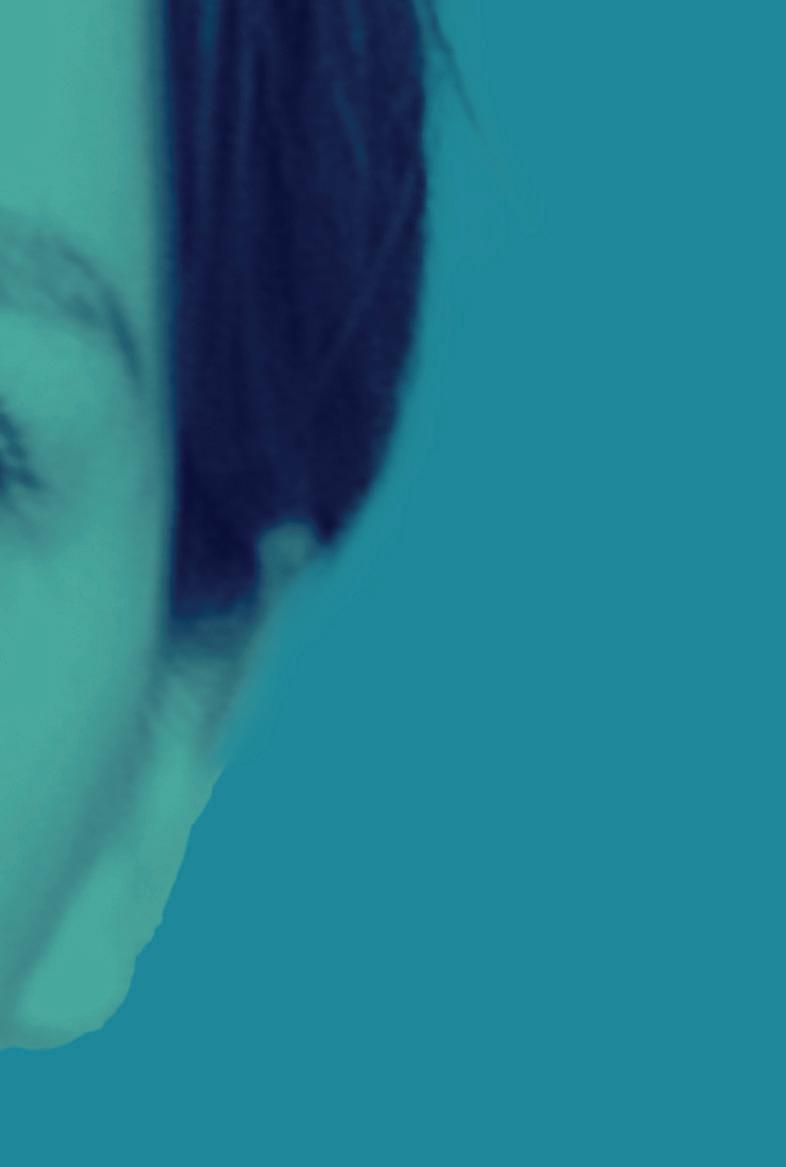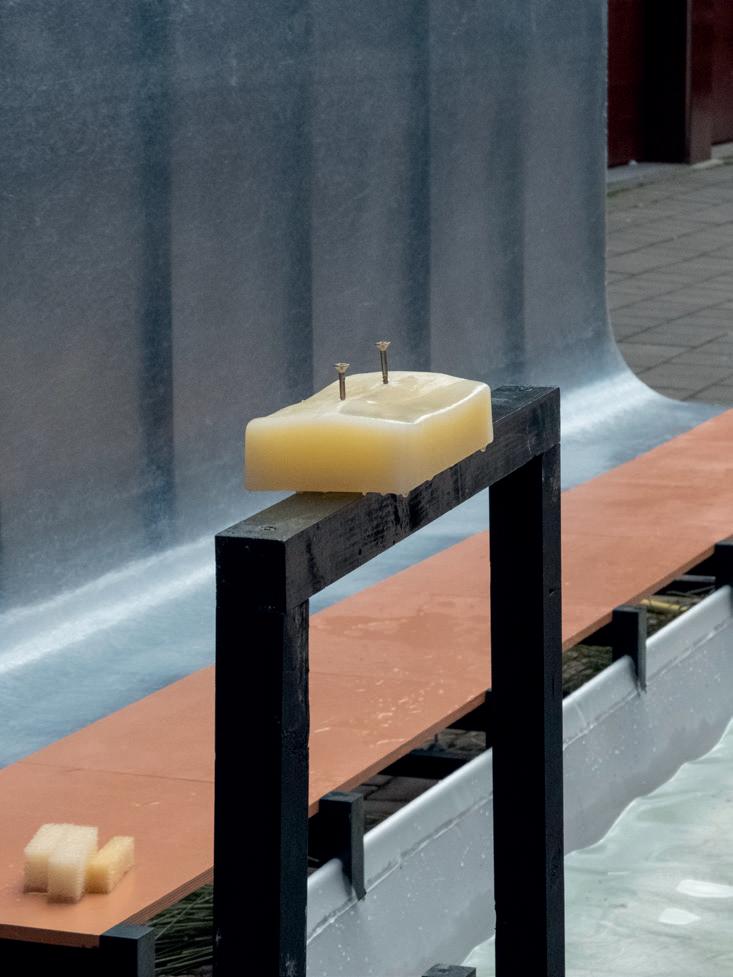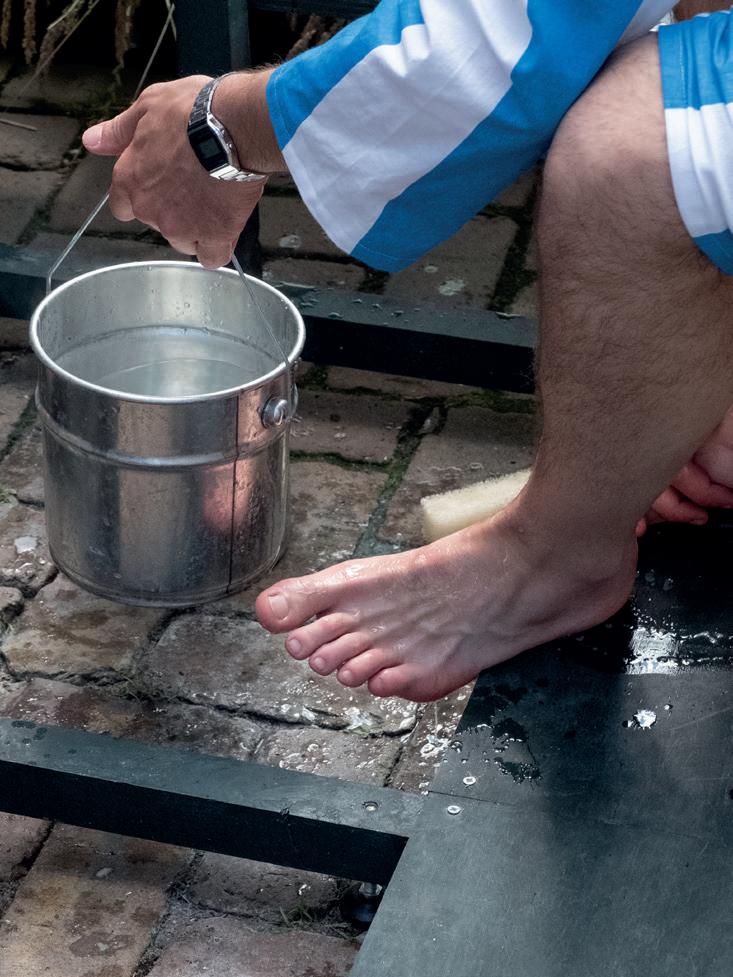
7 minute read
Yelizaveta Strakhova


Advertisement
© Yelizaveta Strakhova








Living the City
Yelizaveta Strakhova Artist, graphic designer & spatial practitioner
Our bodies carry us through life. But are urban spaces designed to carry them? In this essay, Yelizaveta Strakhova theorises that we’ve disconnected our physique from the city since physical labour has become redundant. But bodies still exist in urban contexts. Which practices can help us to reconnect – to start living the city?
Once every year in a given month of summer, one after another neighbourhood of Moscow is disconnected from hot water. Moscow, as many other Russian cities, has a central heating system, which means that water is heated with excess heat at combined heat and power plants and circulates through the city’s water infrastructure already hot. A remnant of Soviet times, the system needs consistent servicing in summer to eradicate any issues before winter arrives. Currently, this period only lasts for ten days – but back in my childhood, we would have to go without any hot water for three full weeks. During these streaks, the usually private space of a bathroom suddenly extended into the most social one – the kitchen. Shiny at first, but covered in calc residue closer to the end of the journey, 5-litre metal pots would take their temporarily permanent place on the stove. A large blue basin with a small pot instead of a ladle migrated between the two bathrooms.
At the turn of a knob, a hoarse, rattling sound of air entering the pipes would fill the house. I always wondered if that noise of grasping for water was what a fish taken out of water would sound like, if amplified. This industrial melody would announce the arrival of the alternative bathing season; then, the dance would begin. Initially an observer, with every year I slowly grew into performing it. Starting as a choreography of three – me, my mum and the water – I was soon allowed to find my own rhythm in moving with the element.
The filling up, the lifting, the boiling, the waiting, the checking in, the tapping of a pot, not hot enough, the dipping of a finger, the waiting, the return to other tasks, time passing, the forgetting, the running, the splashing, the overflowing, the switching off, the tipping of the blue basin, the cold leftover water rushing out, the clearing of a path, the lifting, the carrying, the tensing of muscles, the peak of concentration, the pouring, the pausing, the steam hitting the hands and then the face, the dodging, the pouring, the flowing of cold water, the submerging of hands, too hot, the pulling out, the mixing, the flowing of cold water, the merging of watery layers, the playing, the undressing, the submerging of a ladle, the scooping, the pouring, the soaping, the rinsing, the lifting, the balancing, the pouring out the leftover water in one go.
This experience of sharing ‘time-space’ with a body of water outside of the oppressive cycles of utilitarian consumption unintentionally became a listening device, an exercise of attunement. Instead of an infinite stream summoned by the turn of a knob, during this period, water took a finite form proportionate to my own body. Contained in smaller vessels, with its own temporality, weight, movement patterns and temperature, it gained characteristics similar to those of a body.
In her book Bodies of Water1 Astrida Neimanis turns to Ursula LeGuin’s carrier bag theory, which suggests that instead of sharp weapons, the earliest cultural invention must have been a container that allowed collecting and carrying produce. Neimanis weaves this theory together with the McMenamins’ ‘Hypersea’ – a paradigm which suggests that over the course of their evolution, interconnected systems of terrestrial life became the embodiment of the sea, its extension into land:
“The land biota represents not simply life from the sea, but a variation of the sea itself. Acting over evolutionary time as a rising tide, the land biota literally carries the sea and its distinctive solutes over the surface of the land, into some of the driest environments on Earth.” 2
1 A. Neimanis, Bodies of Water: Posthuman Feminist Phenomenology (2017) 2 M. McMenamin & D. McMenamin, Hypersea (1994)
As a result, Neimanis suggests that earthly beings can be imagined as ‘evolutionary carrier bags for water’. Porous and spongy, they both are the waterways and the sites that function as gestation pools for other lifeforms. Such framing and blurring of a bodily boundary leads to the expansion of oneself beyond the confines of one’s skin.
Astrida Neimanis’ thinking is deeply rooted in phenomenology, which sees the body as an apparatus for sensing the world. She suggests that the “post human bodies are lived”3 and it is through wonder and attentiveness to our embodiment that we can make sense and relate to the world. The contemporary urban environment is dominated by cycles of passive consumption. Entangled in supply-demand chains, the individual comes to rely on the acquisition of goods and services to sustain their wellbeing delegating the tasks of production and maintenance to external parties. This causes the withdrawal of the urban body from active participation in the satisfaction of basic human needs. As a result, if we look at the range of actions performed in the urban realm, we can see how exhausted the somatic vocabulary has become. The complex and multifaceted acts of growing and gathering food, building and renovating


Yelizaveta Strakhova’s project ‘Heterogeneous waters’ © Francesca Lucchitta
shelter and collecting, filtering and delivering water, to name a few, have been substituted with acts of choosing and paying prior to consuming. That being said, I do not mean to downplay the role that the infrastructural advancements and the lifting of the burdens of daily struggles for survival play in increasing the quality of life. Instead, I propose to critically assess the changes in behaviour and grow aware of the disappearing knowledges that accompanies urbanisation.
The urban environment within an economy-driven value system strives for maximum productivity. The sensing of the world and embodied knowledges about it have often been a result of active participation in production processes. However, since the inhabitants of cities have been largely liberated from the need to take an active role in the latter, the actions of somatic engagement with the world through the performance of physical labour have become redundant. It is their exclusion from the system driven by exponential growth that positions these actions in an alternative value system and renders them a suitable medium
3 Neimanis (2017)
for challenging the existing structures. Consequently, this means that instead of a goal-oriented action, the performance of physical labour could become a process-oriented action focused on the exploration of alternative behaviour patterns within the highly regulated urban realm.
For me, this thinking, inspired by the aforementioned somatic practices and stimulated by the disturbances in the water infrastructure, has inspired an alternative definition of bathing environments as sites for acquiring knowledges about water through somatic engagement with the resource that goes beyond utilitarian hygienic practices. Currently, it manifests as an ongoing investigation into creating spaces where both the resource and the human body are liberated from the productive functions assigned to them by the urban environment. Thus, the space of a bath – or, maybe better: water house – becomes a negotiation ground where the presence of all actors – human and more-than-human – is defined by processes of attunement and continuous corporeal engagement with the space.
It might be hard to imagine how this ritual-centred spaces can infiltrate the contemporary western cityscape.
However, I trust that the answer to that question resides in the positioning of a space as a process, the intertwining of everchanging actors and factors rather than a constant unaltered volume. Through the acts of performing, of living the city, we might be able to locate the cracks in the system and practise ways of inhabiting them. CURIOUS FOR MORE?
In the DCFA programme Rituals of (Self-)Care, Yelizaveta Strakhova and others explore which rituals and practices we can introduce into our daily lives to become more caring communities.
BOOK: DESIGN UNBOUND
This book presents a new tool set for having agency in the twenty-first century, in what the authors characterise as a ‘white water world’ – rapidly changing, hyperconnected and radically contingent.
TALK: HOW TO BECOME A BODY OF WATER
Hydrofeminist and educator Astrida Neimanis offers a provocation of various cultural readings and literary proposals of amphibious living in a potentially reinstated water world.










